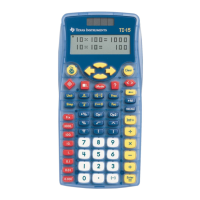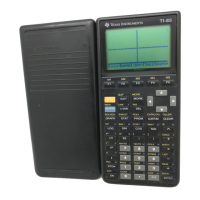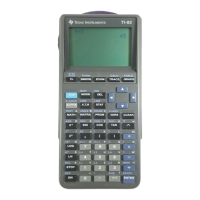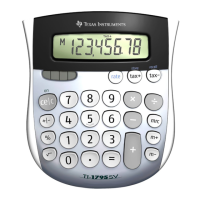factor()
The methods include the well-known factorizations of binomials and quadratics, together with methods
described by Geddes, Czapor and Labahn, Algorithms for Computer Algebra, Kluwer Academic
Publishers, Boston, 1992. Laguerre's method is used for approximate polynomial factorization. (Press
et. al: Numerical Recipes Cambridge University Press, 1986.)
fMax()
See fMin()
fMin()
For fMin(expr,var), if (expr,var) cannot be computed symbolically, a combination golden-section
parabolic interpolation search is performed for one local minimum. (R. Brent, Algorithms for
Minimization without Derivatives, Prentice-Hall, 1973.) Otherwise, fMin(expr,var) is determined by
solve(d(expr,var)=0,var), filtered by attempting to determine the signs of higher-order derivatives at
these candidates. Surviving candidates are compared with the limits of expr as var approaches
+infinity and -infinity; and also with points where expr or its derivative is discontinuous.
integration (symbolic)
Antiderivatives are determined by substititutions, integration by parts, and partial-fraction expansion,
much as described by J. Moses (Symbolic Integration: The Stormy Decade, Communications of the
ACM, August 1971, Volume 14, Number 8, pp. 548-559). Antiderivatives are NOT computed by any
of the Risch-type algorithms. Definite integrals are determined by subdividing the interval at detected
singularities, then for each interval, computing the difference of the limit of an antiderivative at the
upper and lower integration limits. Except in exact mode, nINT() is used were applicable when
symbolic methods don't succeed.
limit()
Limits of indeterminate forms are computed by series expansions, algebraic transformations and
repeated use of L'Hopital's rule when all else fails. Limits of determinate forms are determined by
substitution.
nDeriv() (numeric derivative)
nDeriv(f(x),x,h)=
f
(
x+h
)
−f
(
x−h
)
2h
nInt() (numeric integration)
nInt() uses an adaptive 7-15 Gauss-Kronrod quadrature somewhat like the algorithm described in
Numerical Methods and Software, by David Kahaner,Stephen Nash,Cleve B. Moler,George E.
Forsythe and Michael A. Malcolm, Prentice Hall 1989.
nSolve() (numeric solve)
nSolve() uses a combination of bisection and the secant method, as described in Shampine and Allen's
Numerical Computing: An Introduction, W.B. Saunders Co., 1973.
2 - 14

